
 Copyright 2018 by Jason Novak All rights reserved
Copyright 2018 by Jason Novak All rights reserved
First Edition For information about permission to reproduce selections from this book, write to Permissions, W. W. Norton & Company, Inc., 500 Fifth Avenue, New York, NY 10110 For information about special discounts for bulk purchases, please contact W. W. Norton Special Sales at specialsales@wwnorton.com or 800-233-4830 Production manager: Beth Steidle
Cover design: Chin-Yee Lai The Library of Congress has cataloged the printed edition as follows: Names: Novak, Jason, 1979 author.
Title: Et tu, Brute? : the deaths of the Roman emperors / Jason Novak.
Description: First edition. W. W.
Norton & Company, 2018.
Identifiers: LCCN 2017054871 | ISBN 9780393635737 (hardcover)
Subjects: LCSH: EmperorsRomeDeathCaricatures and cartoons. |
EmperorsRomeBiographyCaricatures and cartoons. | American wit and humor, Pictorial.
Classification: LCC DG274 .N68 2018 | DDC 937/.060922dc23
LC record available at https://lccn.loc.gov/2017054871 ISBN 978-0-393-63574-4 (e-book) W. W. Norton & Company, Inc., 500 Fifth Avenue, New York, N.Y. W. W.
Norton & Company Ltd., 15 Carlisle Street, London W1D 3BS To Gertrude and Eloise,
but dont try this at home. O, Death O, Death Wont you spare me over til another year Wont you spare me over til another year Wont you spare me over til another year traditional, arranged by
the Stanley Brothers  B EING AN EMPEROR in ancient Rome was a dangerous business. In the abstract, it sounds like a great gig, but it wasnt all bacchanalias and parties in the Hippodrome; it was a horrible job filled with violence and treachery. The emperors survival was predicated on an unthinkable (to us, at least) level of personal and public brutality. Even Marcus Aurelius, known to posterity for his collection of ascetic philosophical analectsa philosopher king, as it werebloodied his hands in endless border wars with Germany and Persia. Warfare was a major killer of emperors.
B EING AN EMPEROR in ancient Rome was a dangerous business. In the abstract, it sounds like a great gig, but it wasnt all bacchanalias and parties in the Hippodrome; it was a horrible job filled with violence and treachery. The emperors survival was predicated on an unthinkable (to us, at least) level of personal and public brutality. Even Marcus Aurelius, known to posterity for his collection of ascetic philosophical analectsa philosopher king, as it werebloodied his hands in endless border wars with Germany and Persia. Warfare was a major killer of emperors.
In an age when leadership prided itself on foolhardy bravery, emperors and generals participated fully in hand-to-hand combat alongside their armies. Many emperors disappeared in the fray of battle, and it must be assumed they perished under the blade of the enemy. Treachery was another major cause of death. For example, in 54 AD the emperor Claudius was poisoned by his own wife so that her son from a previous marriage (the infamous Nero) could inherit the throne. Later, in 192 AD, the mad emperor Commodus, who fancied himself a gladiator, was strangled to death by his longtime wrestling companion. Quite a few emperors were killed by their own generals while on military campaigns.
The rare emperor lucky enough to avoid being killed in battle or murdered by someone who wanted the job faced death by any number of gruesome maladies. One common but now very treatable illness was dropsy, also known as edemaa chronic inflammation of the extremities. As if illness werent enough, sometimes the treatments were even deadlier. A few emperors died at the hands of well-meaning but ignorant physicians.  E T T U , B RUTE ? is an illustrated compendium of the deaths of the Roman emperors from the establishment of the Roman Empire to the fall of Rome. Contrary to popular assumption, the first emperor was not Julius Caesar but his adopted nephew Octavian, who later styled himself Augustus.
E T T U , B RUTE ? is an illustrated compendium of the deaths of the Roman emperors from the establishment of the Roman Empire to the fall of Rome. Contrary to popular assumption, the first emperor was not Julius Caesar but his adopted nephew Octavian, who later styled himself Augustus.
Julius Caesar was merely a consula sort of senatorial whip in a government without a head of state. He proclaimed himself a provisional dictator during a time of national crisis, effectively setting the parameters of what would eventually become the role of emperor. But Caesar himself was assassinated by his cohorts in the Senate before the role of emperor was codified. The title of this book is a line from Shakespeares Julius Caesar . Shakespeare was paraphrasing a line from Plutarchs account of Julius Caesars assassination, where Caesar is stabbed to death by his friends in the Senate and sees his closest compatriot among them, a man named Brutus. And you, too, Brutus? he says in Latin.
I like the idea of having Julius Caesar as a ghost in the booka force thats felt but not seen. With Augustus, Rome was for the first time embodied in a single person. The story of an emperors life became the story of Rome. And the death of any given emperor tells us, in an encapsulated way, what was happening in the empire generally. By the reign of Constantine, which began in 306 AD, the empire had been split into two (and sometimes three) administrative districts, which were ruled at any given time by multiple co-emperors and vice emperors. Et Tu, Brute? ends with the collapse of the western Roman Empire.
The eastern empire continued for another thousand years, but the birthplace of the empire, the city of Rome itself, was irrevocably overrun by barbarians in 476 AD, when Romulus Augustulus was emperor. So, from Augustus to Romulus Augustulus, this book includes all of the emperors and co-emperors who were officially recognized by the Roman Senate (a mere formality, but still to be distinguished from pretenders and usurpers). Ive included a few extras who might be interesting to modern readers, like the empress Zenobia, a usurper from Persia, and one of the few women in the history of the empire to reign solo, without a man taking all the credit. It should be noted that many emperors turned to their wives and mothers to make administrative and military decisionsa fact not lost when an emperors wife or mother was murdered during a rebellion. As to the particular cause of each emperors death, in general Ive tried to be true to what we know of Roman history. For much information I depended on Michael Grants The Roman Emperors: A Biographical Guide to the Rulers of Imperial Rome .
But in places where Grant was vague or unsatisfying about imperial deaths, I went to primary sources: Herodians History of the Empire from the Death of Marcus , Ammianus Marcellinuss The Later Roman Empire , and the anonymous Augustan History . The last is the most fun to read, because its crammed with flagrant, scandalous lies. Naturally I found it the most inspiring. In three cases where historians had no conclusive information about a death or the temerity to make one up, I took gross liberties. Ive shown the boy emperor Diadumenian getting bludgeoned to death by a tree stump, for example. That is pure invention on my part.
Not only have no emperors been implicated in tree stump bludgeonings, I havent been able to pull up any instances of tree stump bludgeonings anywhere in the ancient world. Modern instances are mostly logging accidents. In another instance, Ive drawn Philip the Arab getting sliced completely in half, from nape to navel. Its utter fabrication on my part. We dont know how he was killed. But my fabrication is less absurd than many of the death stories cooked up by ancient historians.
And, finally, I show Gordian III having his entire skeleton pulled out through the top of his head, which is physically impossible. To inform my drawings Ive also used the busts that, until around the third century AD, most Roman emperors had made of their likeness. Thereafter the empire was in such a bad way that most often the only idea we have of imperial likenesses comes from portraits on the coins minted during an emperors reign. Though more formulaic, they do still convey some idea about changing fashions in head and neckwear, and Ive reflected that in my drawings. As Rome grew in size and diversity, the classical image we have of starkly adorned senators in spare white togas gave way to a strange combination of the rough leggings and capes of tribal Germans mixed with the gilded and bejeweled sensibility of the Persians. Its the nature of an empire, after years of colonial rule, to eventually assimilate some of the manners and habits of its subjected territories.
Next page
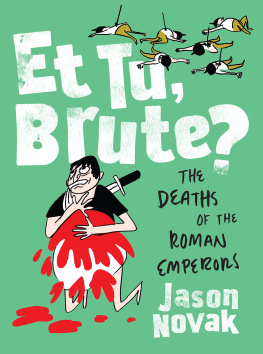




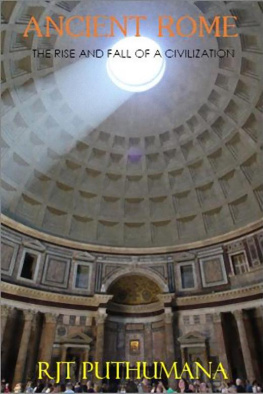

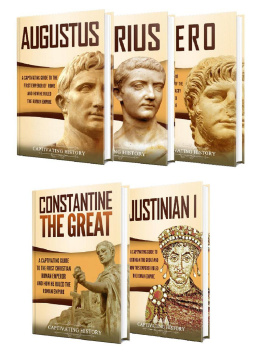
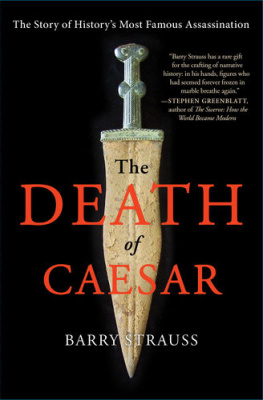
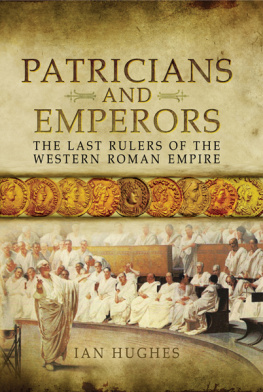
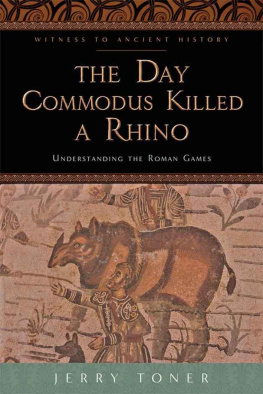
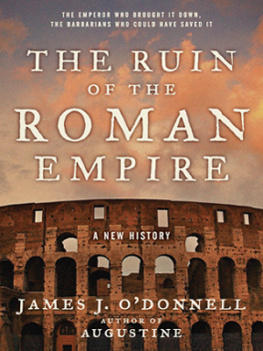
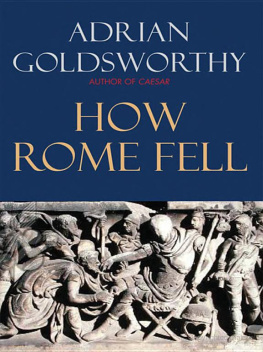
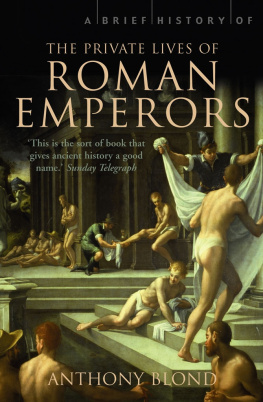

 Copyright 2018 by Jason Novak All rights reserved
Copyright 2018 by Jason Novak All rights reserved B EING AN EMPEROR in ancient Rome was a dangerous business. In the abstract, it sounds like a great gig, but it wasnt all bacchanalias and parties in the Hippodrome; it was a horrible job filled with violence and treachery. The emperors survival was predicated on an unthinkable (to us, at least) level of personal and public brutality. Even Marcus Aurelius, known to posterity for his collection of ascetic philosophical analectsa philosopher king, as it werebloodied his hands in endless border wars with Germany and Persia. Warfare was a major killer of emperors.
B EING AN EMPEROR in ancient Rome was a dangerous business. In the abstract, it sounds like a great gig, but it wasnt all bacchanalias and parties in the Hippodrome; it was a horrible job filled with violence and treachery. The emperors survival was predicated on an unthinkable (to us, at least) level of personal and public brutality. Even Marcus Aurelius, known to posterity for his collection of ascetic philosophical analectsa philosopher king, as it werebloodied his hands in endless border wars with Germany and Persia. Warfare was a major killer of emperors. E T T U , B RUTE ? is an illustrated compendium of the deaths of the Roman emperors from the establishment of the Roman Empire to the fall of Rome. Contrary to popular assumption, the first emperor was not Julius Caesar but his adopted nephew Octavian, who later styled himself Augustus.
E T T U , B RUTE ? is an illustrated compendium of the deaths of the Roman emperors from the establishment of the Roman Empire to the fall of Rome. Contrary to popular assumption, the first emperor was not Julius Caesar but his adopted nephew Octavian, who later styled himself Augustus.